Select Language

NVIDIA’s latest quarterly results highlighted the company’s continuing strength in artificial intelligence compute, but also left questions for investors focused on China.
UBS said in a note following the company’s release that NVIDIA “maintained its streak of solid results beat, with better-than-expected results for the quarter that ended on 31 July.”
The bank noted that “while guidance indicates strong sequential improvement, the lack of clear visibility around China-related AI chip shipments may have disappointed a few AI bulls.”
AI compute is expected to drive nearly 60% of global AI capital expenditure in 2025, UBS said, adding: “We expect global AI capex to grow by 67% in 2025.”
That momentum is said to underpin what the bank described as “strong top-down tailwinds for GPU makers like NVIDIA.”
At the same time, UBS cautioned that “investors cannot be too complacent and ignore some of the bottom-up headwinds that may emerge over the next 12 months around developments in the supply chain and also potential market share shifts.”
China remains a focal point. Before U.S. restrictions imposed in April, China represented only a low- to mid-teen percentage of NVIDIA’s revenue, UBS noted.
However, “any clarity about the resumption of AI chip shipments will likely be a catalyst, and the lack of clarity remains a near-term uncertainty.”
Beyond China, UBS highlighted potential demand normalization after strong first-half front-loading ahead of NVIDIA’s next major chip launch in 2026.
While it expects NVIDIA’s dominance to continue through 2025, UBS said the arrival of new competitive products in 2026 could reshape the landscape.
“We therefore believe any supply chain order shifts will likely create some noise,” UBS said, adding that “the evolving AI compute landscape highlights the case for a diversified exposure.”
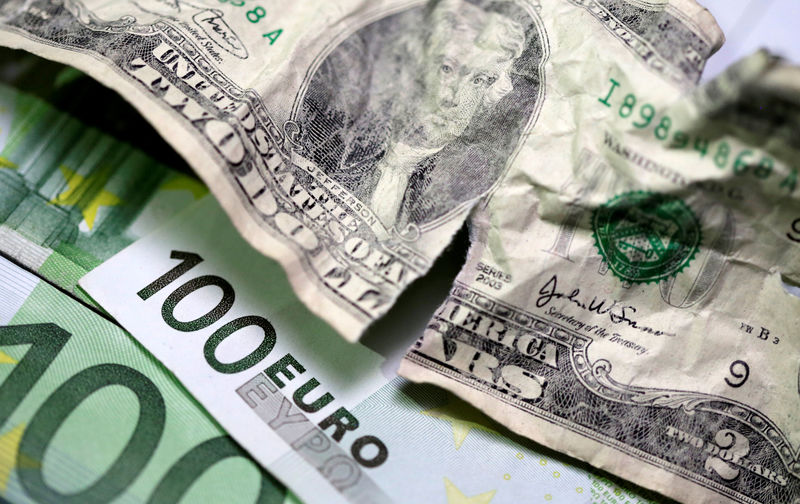
The U.S. dollar rose Wednesday, although gains have been limited by concerns over the independence of the Federal Reserve after U.S. President Donald Trump’s attempt to remove Governor Lisa Cook.
At 05:25 ET (09:25 GMT), the Dollar Index, which tracks the greenback against a basket of six other currencies, traded 0.4% higher to 98.487, bouncing after losses at the start of the week.
Fed independence in question
Trump said on Monday he would fire Fed Governor Lisa Cook over alleged improprieties in obtaining mortgage loans, raising concerns about the Federal Reserve’s independence and the potential for increased political influence over monetary policy.
Cook responded, through her lawyer, that Trump has no authority to fire her from the central bank, and she will not resign, kicking off what could be a protracted legal fight.
“President Trump’s firing of Fed Governor Lisa Cook and the broad view that this marks further politicisation of the Fed are negative for the dollar,” said analysts at ING, in a note.
“Yet, the FX reaction has been muted and may only play out in the longer run, likely for two reasons. First, Cook is challenging the decision, which will probably end up in court. Second, her departure won’t have a big impact on the next few meetings. With Powell still in charge, markets expect policy to remain data-driven, and the dovish dissent remains too small to push for faster or larger cuts.”
Euro heads lower
In Europe, EUR/USD dropped 0.5% to 1.1586, weighed by the political uncertainty in France as well as disappointing German consumer sentiment data.
French Prime Minister Francois Bayrou is set to lose a confidence vote on Sept. 8 over his budget plans.
If the government falls, President Emmanuel Macron could name a new prime minister immediately or ask Bayrou to stay on as head of a caretaker government, or he could call a snap election.
“Markets are still making up their minds about the aftermath of the upcoming confidence vote and don’t seem in a rush to price snap elections as the baseline scenario,” said ING.
“The alternative – this or a new government watering down spending cuts enough to gather parliamentary support and deliver some fiscal consolidation – is plausible, though admittedly a relatively narrow path given the heightened scrutiny it faces.”
Sentiment among German consumers is expected to fall for the third time in a row in September, as the GfK consumer sentiment index declined to -23.6 points from a slightly downwardly revised -21.7 points the month before.
GBP/USD traded 0.3% lower to 1.3445, with a hawkish Bank of England providing sterling with some support.
“We still think a structural break above 1.35 is a matter of when rather than if,” said ING.
Aussie dollar slips despite CPI rise
Elsewhere, USD/JPY rose 0.4% to 147.92, while USD/CNY gained 0.1% to 7.1610.
AUD/USD edged 0.3% lower to 0.6471, after the Australian consumer price index for July rose by 2.8% year-on-year, surpassing forecasts of 2.3% and up from 1.9% in June.
This unexpected surge was primarily driven by an increase in electricity prices, attributed to the expiration of some federal government rebates.
Wednesday’s data followed the RBA’s August minutes, which signaled further rate cuts if inflation eased as expected.
The bank had already lowered rates by 25 basis points last month, but the latest figures suggest inflation may not be cooling as anticipated, complicating its policy outlook.

NEW YORK (Reuters) -Options traders are pricing in about a $260 billion swing in Nvidia’s market value following the chipmaker’s second-quarter earnings expected on Wednesday, U.S. options market data showed.
Nvidia options implied a roughly 6% swing for the shares in either direction following the results, which will be reported after markets close on Wednesday, according to the data.
That is below the 7% long-term average move, suggesting that investors may now have a better handle on what to expect as the company matures.
"The ripples out of Nvidia might be more interesting than the actual move for Nvidia," said Chris Murphy, co-head of derivatives strategy at Susquehanna, a market maker. "A lot of these really high-flyer, speculative AI names have come off a lot, but Nvidia is basically back right below its all-time high."
Should the chipmaker’s results exceed expectations, Murphy said that would "support some of the harder hit, more speculative areas of the AI trade."
Over the last 12 quarters, Nvidia’s implied earnings move averaged 7.7%, while the average actual move was closer to 7.6%, according to data from ORATS.
After a huge rally that helped lift markets this year, the technology sector pulled back a bit this month on fading enthusiasm for those stocks.
Traders are now eying Nvidia earnings to see if its $4 trillion market valuation is justified. Additionally, the potential impact on its forecasts from a recent revenue-sharing deal with the U.S. government will be closely watched.
Shares of Nvidia, the semiconductor giant at the heart of the AI trade, have gained about 34% this year, and closed up 1.02% on Monday at $179.81. The S&P 500 fell 0.43% to 6,439.32 on the day and was up 9.5% year-to-date.
"It’s been (on) an amazing run," said Matt Amberson, founder of ORATS. "It’s just a Goldilocks time for Nvidia."
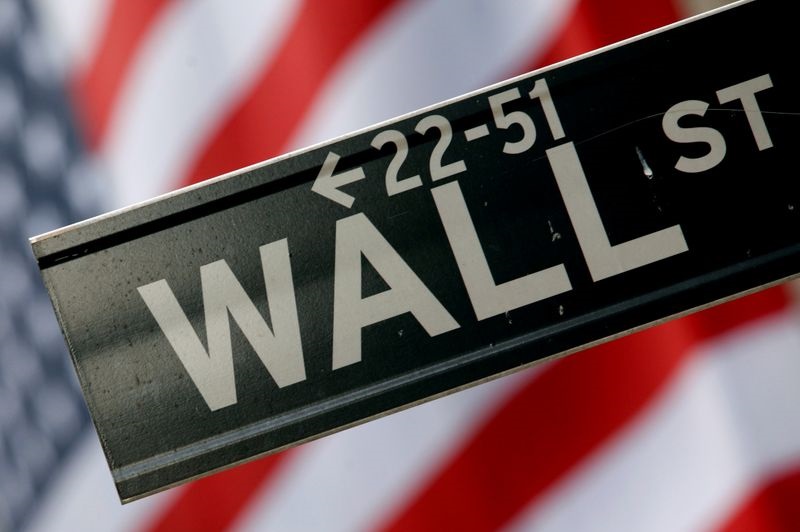
U.S. stock index futures fell modestly Monday pre-market trading after Wall Street rallied sharply on dovish comments from Federal Reserve Chair Jerome Powell, which heralded interest rate cuts in the near-term.
Focus this week is squarely on earnings from artificial intelligence major NVIDIA Corporation (NASDAQ:NVDA), for more cues on the fast-growing industry.
Wall Street rallied on Friday, reversing a bulk of recent losses as investors ratcheted up bets that the Fed will cut interest rates in September.
S&P 500 Futures were down 0.24% to 6,451.25 points, while Nasdaq 100 Futures fell 0.32% to 23,424 points by 06:17 ET (10:17 GMT). Dow Jones Futures were seen down by 0.22% trading at 45,532.0 points.
Powell signals potential rate cut, Wall St rallies
Powell, speaking at the Jackson Hole Symposium on Friday, said the central bank could possibly cut rates in September amid increasing risks to the labor market.
But the Fed Chair warned that the decision was not set in stone, especially as risks from inflation remained. Fed policymakers have repeatedly cited uncertainty over the inflationary impact of President Donald Trump’s trade tariffs.
Still, Powell’s comments were relatively dovish when compared to recent signaling from the Fed, and saw markets ramp up bets on a September rate cut. Wall Street indexes also rose sharply following his comments, reversing most of last week’s losses.
The S&P 500 rose 1.5% to 6,466.91 points on Friday. The NASDAQ Composite rose 1.9% to 21,496, while the Dow Jones Industrial Average rose 1.9% to a record-high 45,631.74 points. The US Small Cap 2000 surged 3.9% on Friday after Powell’s speech.
"Small Caps run the risk of seeing only a short-lived outperformance trade once again, particularly if the economic concerns that appeared open the door for a September cut ultimately come to fruition," RBC strategist Lori Calvasina wrote in a note.
Markets are now pricing in a ~89% chance of a 25bp rate cut in September, followed by a 49% chance of another 25bp cut in December.
Nvidia awaited for more cues on AI
Focus this week is squarely on second-quarter earnings from AI major NVIDIA Corporation (NASDAQ:NVDA), which are due on Wednesday.
The company is widely regarded as a bellwether for AI demand, and is expected to mostly log another strong quarter.
But focus will be on the company’s China sales, which are likely to have fallen further amid brief U.S. export curbs and increased Chinese scrutiny towards AI chips. Nvidia was seen halting production of its China-specific H20 chip last week.
Nvidia’s earnings also come following an extended rout in tech shares, as investors questioned just how profitable the AI industry will remain in the coming quarters.
Outside Nvidia, Dell Technologies Inc (NYSE:DELL), Dick’s Sporting Goods Inc (NYSE:DKS), Best Buy Co Inc (NYSE:BBY), Dollar General Corporation (NYSE:DG), and Abercrombie & Fitch Company (NYSE:ANF) are also set to report earnings this week.
Second-quarter gross domestic product data is also on tap this week, coming after preliminary data released in late-July showed strong growth.
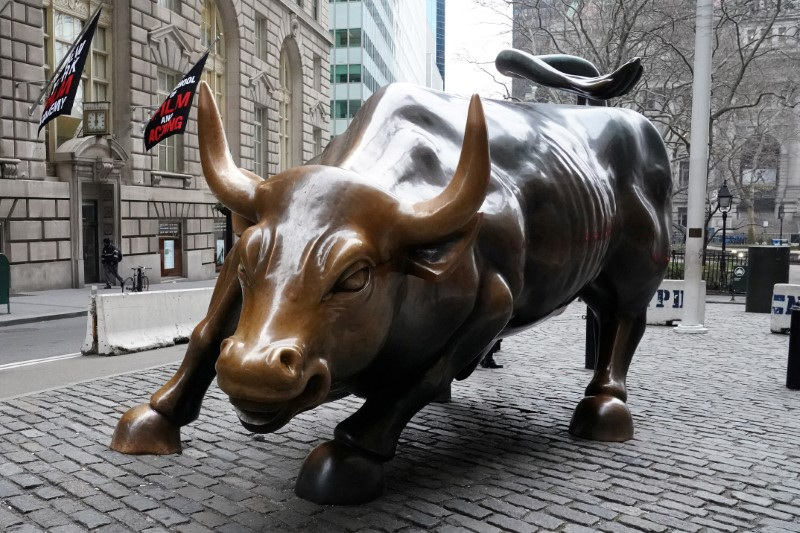
U.S. stock futures slipped slightly lower Friday amid caution ahead of Fed chair Jerome Powell’s speech at the Jackson Hole symposium later in the session. Meta signs a huge deal with Google, which the production of key Nvidia chips are in doubt.
1. Powell to speak
U.S. Federal Reserve Chair Jerome Powell is scheduled to speak later in the session at the central bank’s Jackson Hole symposium - the week’s highlight as investors look for clues over the path of interest rates for the rest of the year.
Expectations of an interest rate cut in September soared at the start of the month in the wake of a surprisingly soft payrolls, but these bets have dropped significantly over the past week, ensuring volatility as he speaks.
Last week, traders were pricing in a 99 percent chance of a 25 bps rate cut at the next Fed meeting. That is now down to 71.5 percent, according to Investing.com’s Fed Rate Monitor Tool.
The drop was caused largely by hotter-than-expected producer inflation data, but hawkish comments from Fed members have also contributed.
Kansas City Fed President Jeffrey Schmid, a voting member, said the central bank isn’t rushing to cut interest rates, pointing to inflation still running above its 2% target and a resilient labor market.
Separately, Cleveland Fed President Beth Hammack, a non-voting member, voiced concern Thursday that stubborn inflation may rule out an interest-rate cut in September.
Powell’s speech comes amid market concerns of stagflation, a combination of sluggish growth and sticky inflation that could limit the Fed’s ability to ease monetary policy.
The Fed chair could also use the opportunity to speak about the importance of the central bank’s independence, given the extent of criticism from the Trump administration, and from the president in particular.
Earlier this week, Trump urged Fed Governor Lisa Cook to resign over mortgage allegations raised by one of his political allies, intensifying his effort to gain influence over the U.S. central bank.
2. U.S. futures fall ahead of Powell
U.S. stock futures slipped lower Friday, with investors awaiting Fed chair Jerome Powell’s speech at the Jackson Hole symposium for clues over the future path of monetary policy.
At 03:00 ET (07:00 GMT), the S&P 500 futures traded 7 points, or 0.1%, lower Nasdaq 100 futures dropped 60 points, or 0.3%, and Dow futures fell 20 points, or 0.1%.
The major indices closed lower Thursday, with the broad-based S&P 500 posting a fifth straight day of declines.
As of Thursday’s close, all three major averages were headed for a losing week. The S&P 500 is off 1.2% week to date, the NASDAQ Composite is down 2.4% and the Dow Jones Industrial Average is on pace for a 0.4% slide.
Investors are cautious ahead of Powell’s speech at the Fed’s annual economic symposium in Wyoming, hoping to gain clarity on the interest rate outlook.
On the corporate front, both Intuit (NASDAQ:INTU) and Zoom (NASDAQ:ZM) will be in the spotlight after the companies posted results after the close Thursday.
3. Nvidia stopping H20 chip production?
Nvidia (NASDAQ:NVDA) has asked some of its component suppliers to stop production related to its made-for-China H20 general processing units, according to reports, as Beijing makes life difficult for the American chip giant.
Reuters reported that Nvidia has asked Foxconn (SS:601138) to suspend work on the H20 AI chip, the most advanced product the U.S. company is currently permitted to sell to China.
At the same time, The Information detailed that Nvidia has asked Arizona-based Amkor Technology (NASDAQ:AMKR), which handles the advanced packaging of the company’s H20 chips, and South Korea’s Samsung Electronics (KS:005930), which supplies memory for them, to halt production.
Nvidia was summoned to a meeting with the Cyberspace Administration of China last month, and asked to provide information on the chips as Beijing has raised concerns that they could contain certain tracking technology, allowing them to be operated remotely.
Nvidia only resumed sales of the H20 in July after being forced to halt shipments in April due to U.S. restrictions.
"We constantly manage our supply chain to address market conditions," Nvidia said in a statement, declining to elaborate further.
4. Meta signs deal with Google
Meta Platforms (NASDAQ:META) has signed a $10 billion deal with Alphabet’s (NASDAQ:GOOGL) Google, the Information reported, which will see the Facebook owner use Google Cloud’s servers, storage, and other services over the next six years.
Meta, along with Wall Street’s so-called AI Hyperscalers, is racing to build superintelligent AI amid growing calls from investors for returns on the hundreds of billions of dollars poured into AI development.
The company raised the bottom end of its annual capital expenditures forecast by $2 billion, to a range of $66 billion to $72 billion last month.
Meta is seeking outside partners to help it fund the massive infrastructure needed to power AI by offloading $2 billion in data center assets, the company disclosed in a filing earlier this month.
5. Crude set for weekly gains
Oil prices edged higher Friday, on track to snap a two-week losing streak, amid increasing signs that peace negotiations between Russia and Ukraine were stalling.
At 03:00 ET, Brent futures gained 0.1% to $67.68 a barrel, and U.S. West Texas Intermediate crude futures rose 0.1% to $63.59 a barrel.
Both contracts climbed more than 1% in the prior session. Brent has risen 3% this week, while the WTI has gained around 1.4%.
The three-and-a-half-year war in Ukraine continued unabated on Thursday, and traders are pricing in more risk that the supply of Russian crude to the global market remains disrupted.
Oil prices were also supported by a larger-than-expected drawdown from U.S. crude stockpiles in the last week, indicating strong demand.
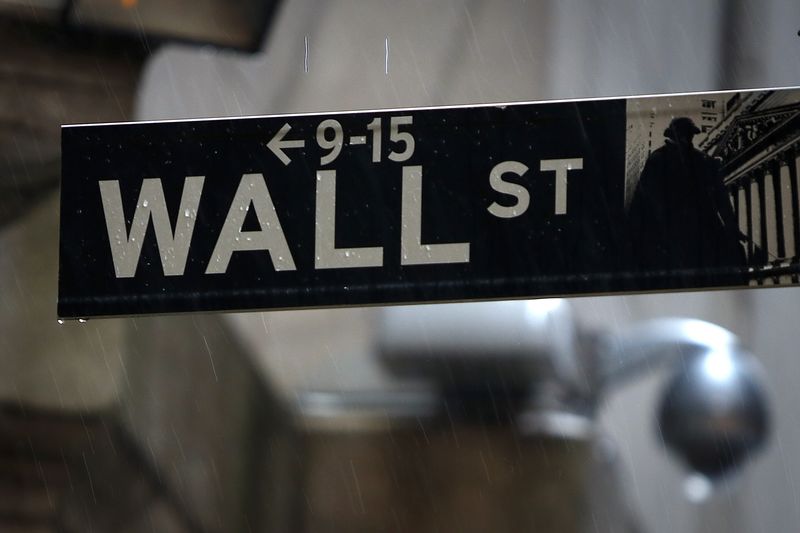
U.S. stock futures stagnated Thursday as investors awaited the start of the Federal Reserve’s Jackson Hole symposium later in the session, as well as the release of more labor market data. Retail giant Walmart also offers up its latest quarterly results, a widely-watched gauge of the health of the U.S. consumer.
1. Jackson Hole symposium starts
The U.S. Federal Reserve’s highly anticipated Jackson Hole symposium kicks off later Thursday, with central bankers from around the world gathering in Wyoming to discuss monetary policy.
The highlight is likely to be Jerome Powell’s speech on Friday - his last one at the annual gathering as Fed chairman - with investors searching for hints for a September cut after expectations soared in the wake of a surprisingly soft payrolls at the start of the month.
“Powell’s reaction function to recent stagflationary data will be key,” said analysts at Bank of America, in a note. “Will he be spooked by jobs revisions or lean into the labor supply slowdown?”
Market-implied odds of a quarter-point cut on September 17 currently stand at 80%, down from 84% a day ago.
Powell could also use his speech to guide how his tenure is recorded in the history books, particularly given the severe criticism leveled at him by President Donald Trump for refraining from rate cuts this year.
Trump’s growing influence over the direction of monetary policy, a potential threat to the independence of the central bank, has been an issue for the markets of late.
The president’s most recent target has been Fed Governor Lisa Cook, with Trump demanding her resignation over allegations made by one of his political allies about mortgages she holds in Michigan and Georgia.
2. U.S. futures steady ahead of jobless claims
U.S. stock futures traded in tight ranges Thursday ahead of the release of key labor market data as well the start of the Federal Reserve’s Jackson Hole symposium.
At 03:00 ET (07:00 GMT), the S&P 500 futures traded just 1 point, or 0.1%, lower, Nasdaq 100 futures gained 12 points, or 0.1%, and Dow futures rose 50 points, or 0.1%.
The major indices closed in a mixed fashion Wednesday, with the Dow Jones Industrial Average eking out a small gain while the S&P 500 and the Nasdaq Composite closed lower. This meant a four-day losing streak for the broad-based S&P 500 as tech names weighed heavily.
The minutes from the last Fed policy meeting indicated that the majority of policymakers still remained concerned about the labor market and inflation, as the two who dissented against the U.S. central bank decision’s to leave interest rates unchanged last month appear not to have been joined by other policymakers.
"Almost all participants viewed it as appropriate to maintain the target range for the federal funds rate at 4.25% to 4.50% at this meeting," the minutes of the July 29-30 meeting said.
Weekly jobless claims are due later in the session, and are expected to show a small increase in the number of Americans claiming unemployment benefits for the first time.
Existing home sales for July and the Philadelphia Fed’s business index are also due for release, while the Fed’s Jackson Hole symposium starts later in the day [see above].
3. Walmart reports Q2 results
Walmart (NYSE:WMT), the world’s largest retailer by sales, headlines the earnings slate Thursday, reporting its second-quarter results before markets open and providing a barometer on the health of the U.S. consumer.
Investors and analysts expect the retailer to report earnings of 74 cents a share, up nearly 11% from a year ago, and revenue of $176.16 billion, up 4%.
Sales fell slightly short of expectations in Walmart’s last quarter, but July’s retail sales report bolstered confidence in current spending trends.
Walmart’s low-price model and dominance in grocery can help it weather economic storms better than others. The world’s largest retailer by sales has surpassed earnings estimates for 11 consecutive quarters, according to LSEG data, sending its valuation soaring even as other consumer staples companies have struggled this year.
That said, Walmart’s management could strike a cautious tone on customer demand as the U.S. labor market cools and inflation ticks up, especially given the uncertainty surrounding the possible impact of the Trump administration’s tariffs policies.
The week has seen a number of big-box retailers reporting. Home Depot (NYSE:HD) started the ball rolling on Tuesday, while Target (NYSE:TGT) tumbled on Wednesday after the company named insider Michael Fiddelke as CEO and retained annual forecasts that were lowered in May.
4. Meta pauses spending on AI recruitment
Has the artificial intelligence craze run its course, or just pausing from breath?
Meta Platforms (NASDAQ:META) confirmed late Thursday a Wall Street Journal report that it has paused hiring for its new artificial intelligence division, ending a spending spree that saw it spend fortunes on a wave of AI researchers and engineers.
The Facebook owner is a member of the group of Wall Street’s so-called AI Hyperscalers, a bracket of tech megacaps spending hundreds of billions of dollars on developing new AI models and building more data center capacity.
Meta by itself has earmarked as much as $72 billion on AI spending this year.
A Meta spokesperson said that the pause was simply “some basic organizational planning: creating a solid structure for our new superintelligence efforts after bringing people on board and undertaking yearly budgeting and planning exercises.”
However, this trend of outsized capital spending has grown into a major investor concern in recent weeks, with shareholders questioning whether increased expenses and the stock-based compensations offered by Meta stood to hurt overall returns on investing in the company.
A report from the Massachusetts Institute of Technology, released earlier this week, claimed that 95% of AI ventures remained unprofitable, adding to the doubts over the extent of the AI spending.
5. U.S. demand boosts crude prices
Oil prices rose Thursday, adding to recent gains and buoyed by signs of resilient demand in the U.S., the world’s largest consumer of energy.
At 03:00 ET, Brent futures gained 0.3% to $67.30 a barrel, and U.S. West Texas Intermediate crude futures rose 0.8% to $63.22 a barrel.
Both contracts climbed over 1% in the prior session.
U.S. crude inventories fell by 6 million barrels last week, the U.S. Energy Information Administration said on Wednesday, while gasoline stocks dropped by 2.7 million barrels, both more than expected.
This indicated steady driving demand during the peak summer travel season, helping offset some concerns about global economic uncertainty.
Traders are also keeping an eye on developments in the search for a peace deal in Ukraine, expecting oil prices to fall once a peace deal is reached.
That said, the drawn-out efforts to secure peace in Ukraine mean Western sanctions on Russian oil supply remain in place, and that the possibility of tougher sanctions and more tariffs on Russian oil buyers still hangs over the market.
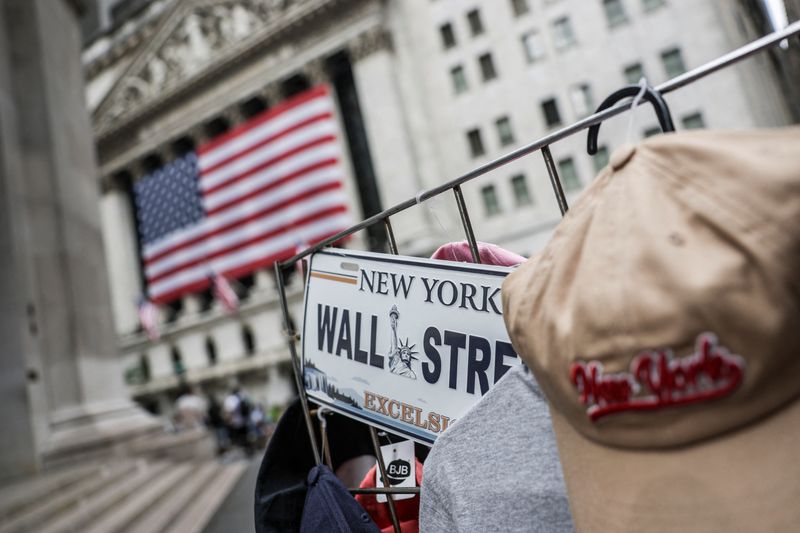
U.S. stock futures slipped lower Wednesday ahead of the release of the minutes from the last Federal Reserve policy meeting. Target heads up a deluge of earnings from the important retail sector, while semiconductors will also be in the spotlight as the U.S. government weighs up taking stakes in the sector. Tesla CEO Elon Musk is also reportedly shelving his political ambitions.
1. Fed minutes could show divisions
Federal Reserve Chair Jerome Powell is set to speak at the Jackson Hole symposium at the end of the week, but investors may not have to wait until then for clues about the central bank’s next move as the minutes of the last meeting are due later in the session.
The Fed has maintained its policy rate in the 4.25%-4.50% range for all of this year, with some policymakers, and Powell in particular, expressing worries that the Trump administration’s tariffs could reignite inflation.
However, this stance has resulted in severe criticism from President Donald Trump, and some Fed officials have recently broken ranks, calling for lower interest rates.
These minutes could show how deep divisions run after Governors Christopher Waller and Michelle Bowman dissented at the last meeting, marking the first time two voting Fed officials have done so since 1993.
Investors and economists are betting the Fed will cut rates by a quarter of a percentage point next month with perhaps another reduction of similar size to come later in the year.
The annual Jackson Hole gathering kicks off with informal interviews ahead of the formal agenda release Thursday evening. Powell’s key address on Friday morning will focus on the economic outlook.
2. U.S. futures fall ahead of Fed minutes
U.S. stock futures slipped lower Wednesday, with investors cautiously awaiting the release of minutes from the last Federal Reserve policy meeting as well as earnings from a number of major retailers.
At 03:00 ET (07:00 GMT), the S&P 500 futures traded 12 points, or 0.2%, lower Nasdaq 100 futures dropped 75 points, or 0.3%, and Dow futures fell 85 points, or 0.2%.
The major indices closed in a mixed fashion Tuesday, with the S&P 500 falling 0.6% and the NASDAQ Composite dropping 1.5%, while the Dow Jones Industrial Average closed marginally higher.
Investors are likely to trade in a cautious manner Wednesday ahead of the key release of minutes from the last Fed policy meeting [see above] as they seek clues about future monetary policy ahead of the Federal Reserve’s Jackson Hole symposium later in the week.
There are also more quarterly earnings due from a number of major retailers, including Target [see below], Lowe’s and TJX before the bell.
U.S. companies have posted their strongest earnings beats in more than three years during the second quarter, according to an analysis by Jefferies, adding that the “difference between actual & consensus earnings growth is 12.3%, the widest spread since 1Q’22.”
3. U.S. government looking at semiconductor equity stakes
The U.S. government is weighing taking equity stakes in semiconductor firms receiving CHIPS Act subsidies to build factories in the country, according to a Reuters report.
Apart from Intel (NASDAQ:INTC), Commerce Secretary Howard Lutnick is also exploring deals with Micron Technology (NASDAQ:MU), Taiwan Semiconductor Manufacturing (NYSE:TSM) and Samsung (KS:005930) that would see Washington secure ownership interests in return for billions in grants, the report said.
The move would mark a historic shift in U.S. industrial policy, giving the government direct influence over companies key to national security. The White House has already confirmed talks with Intel on a potential 10% stake.
Washington last year allocated $6.6 billion to TSMC, $6.2 billion to Micron and $4.75 billion to Samsung, according to the report.
4. Target’s results in spotlight
Target (NYSE:TGT) heads the earnings flow Wednesday, as the focus remains on the retail sector this week, with reports due from a host of big-box retailers and home improvement chains.
The struggling retailer reports fiscal second-quarter earnings before the bell, with investors looking for signs that it is getting back on track given annual sales have been roughly stagnant for about four years.
Wall Street expects the big-box retailer to report earnings per share of $2.03 and revenue of $24.93 billion for the last quarter, according to a survey of analysts by LSEG.
“We see increasing longer-term sales and margin risks for Target given slowing digital sales growth, a lack of scale in digital advertising and third-party marketplace, elevated tariff, pricing and merchandising headwinds, and increasing competitive threats from Walmart (NYSE:WMT) and Amazon (NASDAQ:AMZN),” analysts at Bank of America said, in a note late last week.
Investors will also look for what the retailer says regarding tariffs, as Target’s imports account for roughly 50% of its cost of goods sold, versus Walmart’s 33%.
Home Depot (NYSE:HD) was the first of the major big-box retailers to report this week, with the U.S. home-improvement chain keeping its annual forecasts intact despite posting muted quarterly results on Tuesday.
Earnings are also due from Lowe’s Companies (NYSE:LOW) and TJX Companies (NYSE:TJX) before the open.
5. Musk shelving political ambitions - WSJ
Elon Musk is quietly shelving his plans to start a political party, according to a report in the Wall Street Journal, a move that will likely be welcomed by Tesla (NASDAQ:TSLA) shareholders.
The Tesla CEO had in July said he would start a new party, called the America Party, to represent voters unhappy with both the Republicans and the Democrats.
This followed a major falling out with U.S. President Donald Trump, largely over Musk’s criticism of Trump’s “big beautiful bill,” which he claimed would undermine his efforts to cut government spending as part of the Department of Government Efficiency.
However, Musk has since made few actual moves towards establishing the third party, and the WSJ reported Musk as telling allies that he wants to focus his attention more on his companies, and is reluctant to alienate powerful Republicans .
Any sidelining of Musk’s political ambitions is expected to offer some relief to Tesla shareholders, who had grown increasingly concerned that he was becoming distracted from his responsibilities at the electric car-maker.
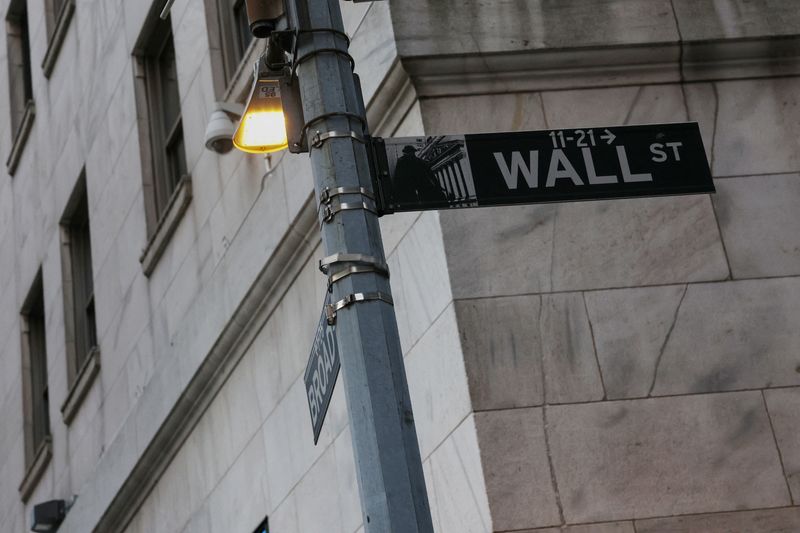
U.S. stock futures slipped slightly lower Tuesday ahead of the release of the earnings from big-box retailer Home Depot , as well as comments from Fed officials. The search for peace in Ukraine continues after talks between U.S. President Donald Trump and Ukrainian President Volodymyr Zelensky, while Palo Alto impresses with its new forecasts.
1. Trump-Zelensky meet in Washington
The quest for peace in Ukraine continues after U.S. President Donald Trump and Ukrainian President Volodymyr Zelensky met on Monday in Washington.
The meeting to discuss an end to the longstanding conflict between Russia and Ukraine ended with both sides appearing optimistic about the future, a sharp contrast to the shouting match that marred the previous gathering of the two presidents.
Trump said that the U.S. would help guarantee Ukraine’s security, but did not specify the terms of any guarantees. This followed a Financial Times report suggesting that Ukraine could offer to buy $100 billion of U.S. weapons, funded by European aid, to get the said guarantees.
Trump also raised the possibility of trilateral talks, also including Russian President Vladimir Putin, following a meeting with Putin in Alaska last week.
Still, a peace deal appears far from imminent, especially given that Putin has shown little indication of agreeing to a ceasefire.
The most significant sticking point is the land that Russia has occupied in fighting, which Ukraine wants back. The Russian leader reportedly wants Ukraine to hand over the remainder of the Donbas region to Moscow to end the war, something Zelensky will be very reluctant to do.
2. U.S. futures slip slightly
U.S. stock futures edged slightly lower Tuesday, with investors cautious ahead of the release of key retail earnings as well as speeches from Federal Reserve officials.
At 02:45 ET (06:45 GMT), the S&P 500 futures traded 10 points, or 0.2%, lower Nasdaq 100 futures dropped 45 points, or 0.2%, and Dow futures fell 50 points, or 0.1%.
The major indices closed Monday mixed after trading in tight ranges, as investors await the start of the Federal Reserve’s Jackson Hole symposium later in the week, looking for clues from Chair Jerome Powell as to what will happen at the central bank’s remaining policy meetings this year.
Fed Governor Michelle Bowman, one of two dissenting voices favouring a rate cut at last month’s meeting, is due to speak later today.
Markets are indicating an 83% chance for a quarter-point rate cut at the Fed’s next policy meeting in September.
On the earnings front, investors will be keeping tabs on reports from a host of big-box retailers and home improvement chains, starting later in the session with results from Home Depot (NYSE:HD).
Investors will also keep an eye on data on housing starts and building permits for July, for clues about the health of the housing market.
3. Home Depot heads up major retailers’ earnings
The retail sector takes center stage on Wall Street this week, with reports due from a host of big-box retailers and home improvement chains.
Home Depot starts the ball rolling later in the session, to be followed as the week progresses with numbers from peers such as Lowe’s (NYSE:LOW), Target (NYSE:TGT), and Walmart (NYSE:WMT).
The figures could present a fresh take on the state of the American consumer heading into the second half of the calendar year.
Home Depot is likely to report a 5.1% jump in revenue for its second quarter ending July, compared to a 0.6% rise last year, data compiled by LSEG showed.
However, tariffs remain a wild card, even if Home Depot sources more than half its goods from within North America. The retailer has touted plans to further diversify its supply chain, and said on last quarter’s earnings call it would not raise prices due to tariffs - but that some items could disappear altogether.
4. Palo Alto impresses with healthy forecast
Palo Alto Networks (NASDAQ:PANW) reported strong quarterly results after the close on Wall Street Monday, while the cybersecurity company also offered up a positive fiscal 2026 forecast, betting on growing demand for its artificial intelligence-powered cybersecurity solutions.
Its stock soared 5% in premarket trading.
The company has been benefiting from an AI-driven upgrade cycle as enterprises accelerate their cloud adoption and modernize security operations amid rising data breach incidents.
A wave of high-profile cyberattacks has hit a number of global companies, prompting the need for robust security solutions.
The company projected annual revenue between $10.48 billion and $10.53 billion, above analysts’ average estimate of $10.43 billion, according to data compiled by LSEG.
It expects adjusted profit per share of $3.75 to $3.85, above estimates of $3.67 for the fiscal year.
Palo Alto Networks also said its founder and chief technology officer Nir Zuk has retired after more than 20 years. Chief Product Officer Lee Klarich will take over as CTO and join the board.
5. Crude falls on increased peace hopes
Oil prices fell Tuesday as traders assessed the potential for three-way talks to end the war in Ukraine, which would likely lead to the lifting of sanctions on Russian crude.
At 02:45 ET, Brent futures slipped 0.4% to $66.35 a barrel, and U.S. West Texas Intermediate crude futures fell 0.4% to $62.44 a barrel.
Both contracts rose nearly 1% on Monday after U.S. Trade Adviser Peter Navarro criticized India’s purchases of discounted Russian crude as funding the war, renewing supply flow worries.
Following talks between Trump and Zelensky in Washington, the U.S. president floated the possibility of a subsequent three-way discussion, including Russia’s Vladimir Putin, keeping alive hopes for a pathway to negotiations.
“There was no critical breakthrough. It appears the next step is a meeting between Zelensky and Putin, possibly within two weeks,” ING analysts said in a note.
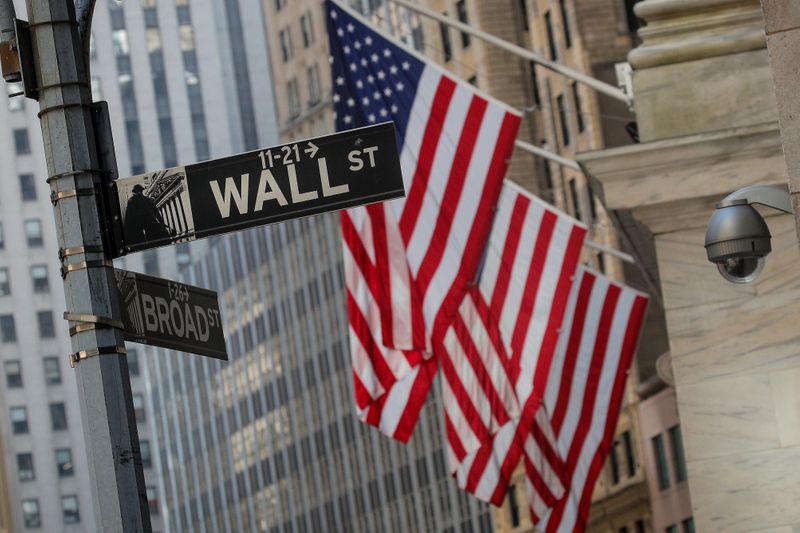
U.S. stocks traded mostly unchanged Monday, pausing for breath after a positive week as investors awaited a meeting between Ukraine President Volodymyr Zelensky and U.S. President Donald Trump in Washington as well as the upcoming Jackson Hole Symposium.
At 09:35 ET (13:35 GMT), the Dow Jones Industrial Average fell 20 points, or 0.1%, the S&P 500 index slipped 3 points, or 0.1%, while the NASDAQ Composite gained 10 points, or 0.1%.
The main Wall Street indices notched their second straight positive week last week, with the blue-chip Dow Jones Industrial Average joined the benchmark S&P 500 and tech-heavy Nasdaq Composite in reaching a new all-time peak during the week.
Zelensky heads for Washington
Zelensky is due to meet with Trump in Washington on Monday in a bid to arrange the outlines of a potential peace deal.
He is likely to come under pressure to agree to a deal, with reports suggesting that a possible agreement could involve Ukraine relinquishing swathes of its eastern region, including Donetsk and Luhansk to Russia, while the Kremlin will withdraw from Southern regions of Kherson and Zaporizhzhia.
Zelensky, who will be flanked by leaders from a host of European countries, has said he supports a "swift and reliable" termination to the more than three-year-old conflict, but said Russia must be willing to end the war "it started."
Trump said on Sunday that Zelensky could end the war with Russia ‘almost immediately’ by acquiescing to Moscow’s demands.
Jackson Hole awaited for more rate cues
The main economic focus this week is squarely on Federal Reserve Jerome Powell’s speech at the Jackson Hole symposium on Friday, which is expected to provide more cues on interest rates.
Powell’s address comes amid growing conviction that the Fed will cut interest rates by 25 basis points in September, especially following soft payrolls and consumer inflation readings for July. Investors are pricing in a 83% chance for a 25 bps cut in September, CME Fedwatch showed.
Strong producer inflation data released last week largely ruled out the chances of a bigger cut.
Walmart, Target to round off Q2 earnings
A host of major retailers are set to report their second-quarter earnings this week, rounding off a mostly positive reporting season.
{{7997|Walmart (NYSE:WMT)}} and {{8180|Target (NYSE:TGT)}} will be the most closely watched, with other major retailers including {{8064|Home Depot (NYSE:HD)}}, Lowe’s Companies Inc (NYSE:LOW), and {{8227|TJX Companies (NYSE:TJX)}} also on tap.
The earnings will provide more insight into the U.S. consumer, amid some concerns that President Donald Trump’s tariffs will chip away at private spending.
About 90% of S&P 500 companies have reported June quarter earnings so far, with 81% of the ones that reported logging stronger-than-expected prints, data from FactSet showed.
Other majors reporting this week include Workday (NASDAQ:WDAY), {{941155|Alibaba (NYSE:BABA)}}, {{6378|Baidu (NASDAQ:BIDU)}}, {{41268|Palo Alto Networks Inc (NASDAQ:PANW)}} and {{7869|Analog Devices (NASDAQ:ADI)}}.
Elsewhere, Tesla (NASDAQ:TSLA) stock fell after The Times newspaper reported that the electric vehicle manufacturer was offering discounts of up to 40% on leased vehicles in the U.K..
Novo Nordisk (CSE:NOVOb) gained strongly after the drugmaker’s Wegovy obesity drug was granted accelerated approval from the U.S. Food and Drug Administration for the treatment of a serious liver disease.
Crude slips lower
Oil prices slipped marginally Monday, adding to last week’s losses, as concerns over Russian supply receded following last week’s meeting between Trump and Putin.
At 09:35 ET, Brent futures slipped 0.1% to $65.76 a barrel, and U.S. West Texas Intermediate crude futures fell 0.1% to $61.91 a barrel.
Both contracts fell nearly 1.5% on Friday, and ended with sharp weekly losses before the U.S.-Russia meeting concluded.
Trump decided against exerting any further pressure on Russia to end the Ukraine war through measures to disrupt its oil exports following his meeting with Putin on Friday.
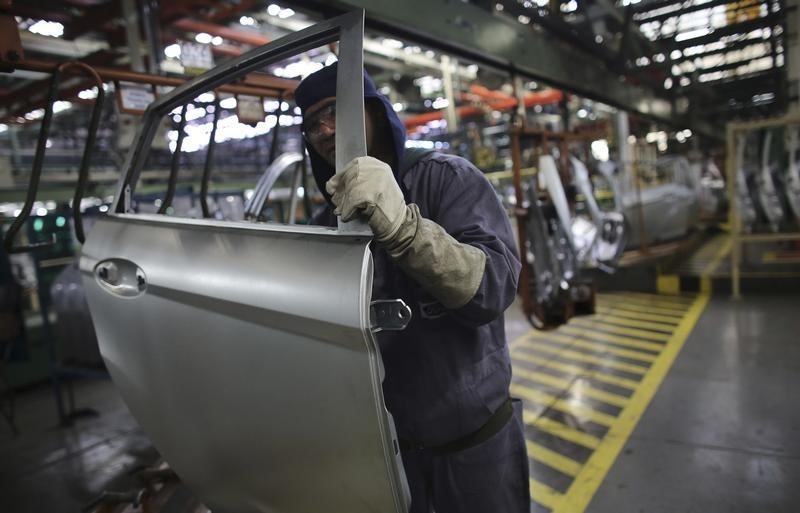
U.S. producer prices rose at a faster-than-anticipated rate in July as a tariff-fueled jump in goods was joined by the biggest advance in the cost of services in more than three years, muddying the outlook for a possible upcoming Federal Reserve interest rate cut.
A chunk of the 1.1% jump in the index for final services demand for the month was fueled by a rise in expenses for machinery and equipment wholesaling, according to figures from the Bureau of Labor Statistics. The indices for portfolio management, securities brokerage, traveler accommodation, and freight transportation also advanced.
Final demand goods, meanwhile, moved up by 0.7%, the largest increase since January, with roughly a quarter traced back to higher prices for fresh and dry vegetables. Prices for gasoline, on the other hand, decreased.
Stripping out volatile items like food and fuel, the measure rose by 0.4%, after a 0.9% gain in June, while a climb in passenger car costs eased to 0.1% from 0.3%. But home electronic equipment costs surged by 5% versus the prior month, while sporting and athletic items -- seen as particularly exposed to elevated U.S. levies -- increased by 1.2%
Analysts had been curious to see if goods inflation, especially for items like furniture, apparel and toys that are viewed as susceptible to the duties, would be offset by what have been recently muted services costs.
The producer price index for final demand increased by 0.9% on a monthly basis in July, accelerating after it was unchanged in June. In the twelve months to July, the figure came in at 3.3%, speeding up from 2.4%. It was the largest such uptick since February.
Economists had predicted readings of 0.2% and 2.5%, respectively.
"July PPI came in hot," said Kathy Jones, Chief Fixed Income Strategist at Charles Schwab, in a post on X. Jones noted that Treasury yields are up "as the Federal Reserve needs to weight this against a softening labor market."
A weak July jobs report, as well as tepid consumer price data released earlier this week, have spurred on expectations that the Fed will slash borrowing costs at its September meeting. It would be the first drawdown by the central bank since it paused its policy easing cycle last December.
Investors have been widely pricing in a 25-basis point reduction after the Fed’s September 16-17 gathering. Treasury Secretary Scott Bessent, meanwhile, has called for an even deeper half-point cut due partially to sharp downward revisions in job growth in June and May.
In a note, analysts at Capital Economics estimated that, with the consumer price data and PPI in hand, the core personal-consumption expenditures deflator is now at 0.32% month-over-month, "implying that the three-month annualized rate jumped back up to 3.2%, from 2.7%." The Fed factors in these numbers as it deliberates over policy actions.
"Nonetheless, with almost 0.1%-point of the monthly gain reflecting the one-off surge in the portfolio management PPI, it probably won’t have much influence on the Fed’s decision on whether to cut in September," said Stephen Brown, Deputy Chief North America Economist at Capital Economics.
Brown added that the "more concerning development" revolves around indications that "services prices might be accelerating."

